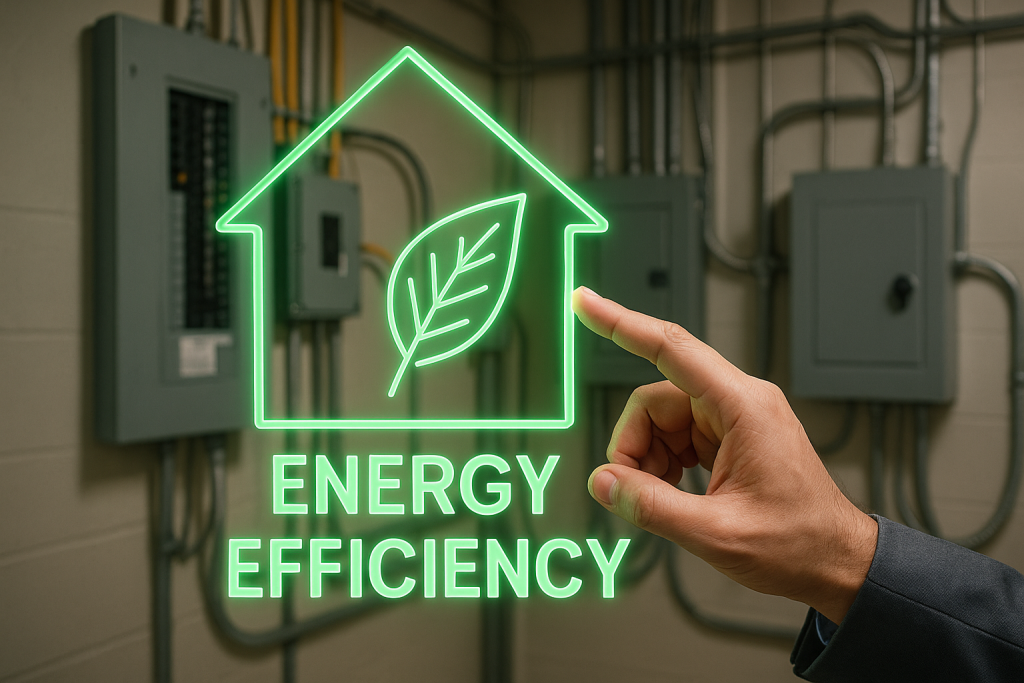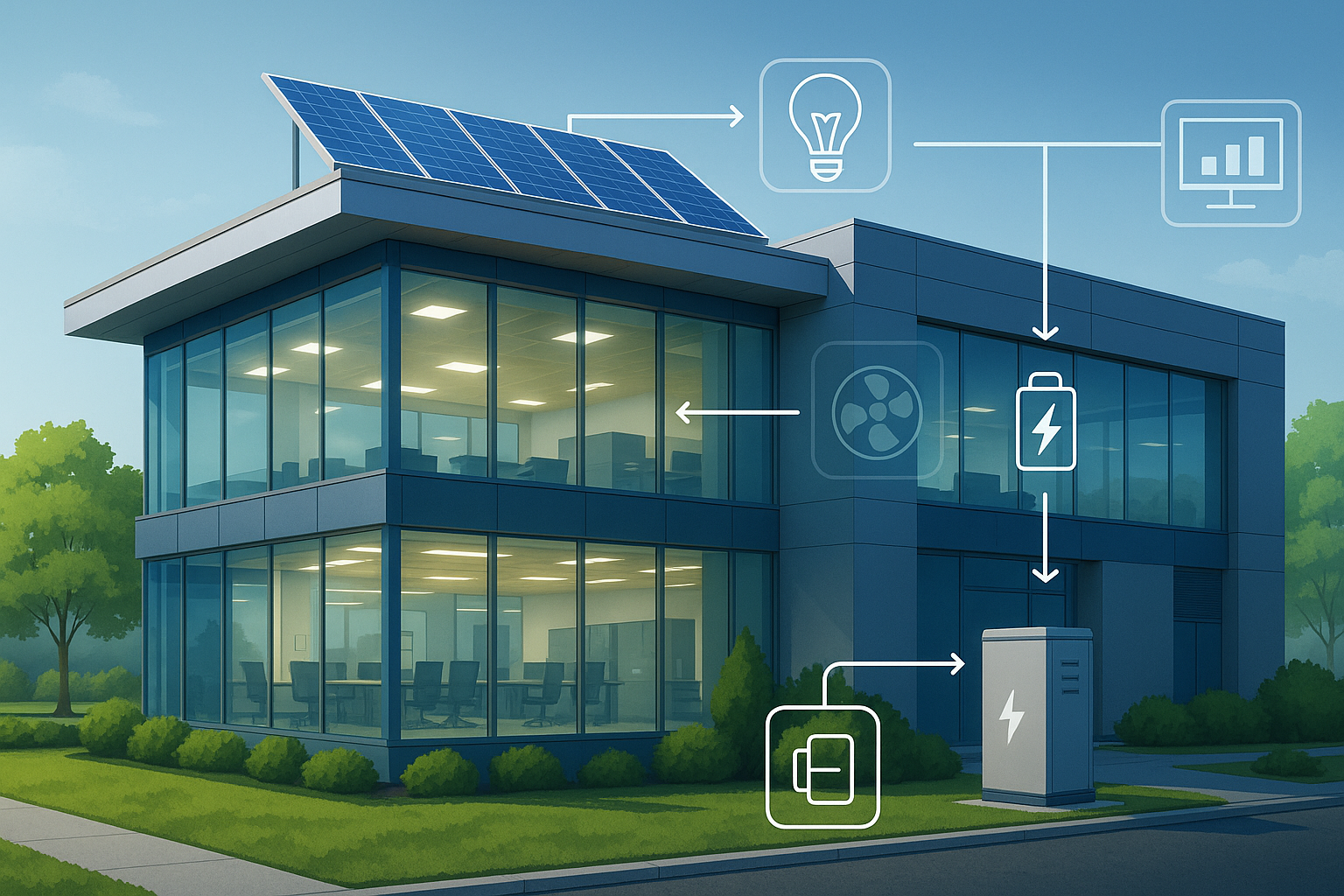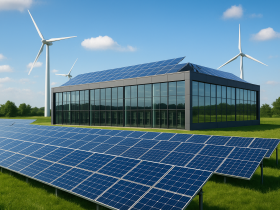Did you know that commercial buildings consume nearly 18% of all energy used in the United States, according to the U.S. Department of Energy? As energy prices rise and environmental concerns grow, businesses face growing pressure to reduce energy use without sacrificing performance. One of the most effective ways to do this is by investing in energy efficient commercial electric infrastructure.
From smarter lighting systems to advanced automation and renewable integration, today’s commercial electrical systems are becoming more intelligent, sustainable, and cost-effective. But what exactly makes an electric infrastructure energy efficient? And how can businesses upgrade their systems to meet modern demands while staying compliant with regulations?
In this comprehensive guide, we’ll explore:
- The key components that make up an energy efficient commercial electric system
- Technologies and strategies that help reduce energy use and improve performance
- The financial, environmental, and operational benefits of upgrading electric infrastructure
- Important codes, standards, and certifications businesses need to follow
- Common challenges and future innovations shaping the next generation of infrastructure
By the end of this article, you’ll have a clear understanding of how to optimize your building’s electric systems for lower energy costs, increased reliability, and long-term sustainability.
Key Components of Energy Efficient Commercial Electric Infrastructure
Modern commercial buildings rely on a range of electrical systems that must work together seamlessly to ensure energy efficiency. Each component plays a key role in lowering energy use, improving safety, and supporting operational needs.
Power Distribution Systems
Efficient power distribution begins with well-designed systems that reduce energy loss during transmission. This includes:
- Transformers: Low-loss transformers help minimize wasted energy during voltage conversion
- Switchgear and Panelboards: Modern units with energy monitoring capabilities help manage loads effectively
- Load Balancing: Strategic distribution of electrical loads prevents overuse, overheating, and improves system longevity
Lighting Systems
Lighting is one of the largest energy consumers in commercial buildings. Efficiency improves when upgrading to:
- LED Lighting: Uses up to 80% less energy and lasts significantly longer than traditional bulbs
- Smart Controls: Motion sensors, timers, and daylight harvesting ensure lights are used only when necessary
HVAC Electrical Controls
Heating and cooling systems contribute heavily to overall energy use. Efficiency gains come from:
- Variable Frequency Drives (VFDs): Adjust motor speed based on demand to reduce energy waste in fans and pumps
- Automated Controls: Fine-tune temperature settings based on occupancy and time of day
Building Automation Systems (BAS)
A Building Automation System ties together HVAC, lighting, and other functions for centralized control. This allows for:
- Real-time Monitoring: Visibility into energy consumption and performance metrics
- Predictive Maintenance: Detection of issues before they escalate into major failures
- Demand Response: Temporary reduction of power use during peak demand periods to lower utility costs
Renewable Energy Integration
Many commercial properties now adopt on-site renewables to reduce grid dependence:
- Solar Panels: Provide clean energy and lower monthly utility bills
- Battery Storage: Stores surplus energy for use during peak hours or outages
- Microgrids: Enable localized energy control and increase resilience
High-Efficiency Equipment
Throughout the building, efficiency depends on using certified, modern equipment:
- ENERGY STAR Certified Devices: Proven to consume less power without compromising performance
- Modern Industrial and Office Equipment: Designed for current energy standards, minimizing unnecessary waste
Energy Efficiency Technologies and Concepts
Beyond components, several technologies help drive better efficiency and performance.
Power Quality and Distribution Efficiency
Stable, clean power enhances reliability and saves energy. Tactics include:
- Power Factor Correction: Devices like capacitors lower reactive power
- Harmonic Reduction: Filters prevent inefficiencies caused by non-linear loads
- Optimized Transformers: Reduce energy loss from heat and electrical resistance
High-Efficiency Lighting
Advanced lighting systems offer measurable efficiency benefits:
- Extended bulb life and reduced maintenance costs
- Less heat output, easing HVAC demand
- Smart dimming and controls triggered by occupancy
Smart Controls and Automation
With Building Management Systems (BMS), businesses can:
- Schedule HVAC, lighting, and equipment use around business hours
- Enroll in utility demand response programs
- Minimize waste through continuous system optimization
Variable Frequency Drives (VFDs)
Crucial for HVAC and pumping systems, VFDs help by:
- Matching motor output to real-time load
- Reducing mechanical wear and extending equipment life
Energy Monitoring and Metering
Smart meters and analytics tools help optimize energy strategies:
- Pinpoint energy-intensive equipment or behaviors
- Support data-driven upgrades and process improvements
Benefits of Upgrading to Energy Efficient Infrastructure
Improving commercial electrical infrastructure offers many benefits:
- Lower Operating Costs: Energy savings improve profitability
- Environmental Impact: Reduces greenhouse gas emissions and supports sustainability goals
- System Reliability: Newer systems are less prone to failure and easier to maintain
- Regulatory Compliance: Helps meet ASHRAE, NEC, and ENERGY STAR requirements
- Employee Comfort: Better lighting, temperature, and air quality can increase productivity
Standards and Compliance Requirements
Adhering to current codes ensures both efficiency and legal compliance. Key standards include:
- ASHRAE 90.1: Defines minimum energy performance criteria for commercial buildings
- IECC (International Energy Conservation Code): Offers energy-efficient design guidelines
- National Electrical Code (NEC): Ensures safe electrical installation practices
- ENERGY STAR Certification: Awarded to top-performing, energy-efficient buildings
Challenges in Implementation
Despite the advantages, there are a few hurdles to consider:
- Upfront Costs: Initial investments may be high, though long-term savings and incentives help offset them
- System Integration: Connecting lighting, HVAC, and controls requires strategic planning
- Retrofitting Older Buildings: Legacy systems may need significant work to be compatible with modern solutions
- Maintenance and Training: Upgraded systems require skilled staff to manage and operate
Future Trends and Emerging Innovations
Technology is quickly changing the landscape of commercial energy systems:
- AI and IoT Integration: Automated adjustments based on usage patterns increase efficiency
- Microgrids and Smart Grids: Enhance local energy control and reliability
- Wireless Sensors: Easy to install and provide real-time data on usage and conditions
- EV Charging Infrastructure: As electric vehicles become more common, integration into building systems is growing
Performance Metrics and KPIs
Key performance indicators help assess system efficiency:
- Energy Use Intensity (EUI): Measures energy use per square meter annually
- Power Factor: A ratio closer to 1.0 indicates better efficiency
- Demand Charges: Monitoring peak usage helps manage billing
- ROI and Payback Period: Tracks how quickly savings offset upgrade costs
- Carbon Reduction: Measured in tons of CO₂ saved annually
Conclusion

Energy efficient commercial electric infrastructure provides businesses with a reliable, cost-saving, and environmentally responsible foundation for operations. By taking advantage of modern technologies and design strategies, businesses can stay ahead of regulations, reduce expenses, and create healthier, more productive workspaces.
Whether you’re exploring upgrades in lighting, HVAC, automation, or renewable energy, the shift toward efficiency is a practical and strategic step for any commercial facility. Begin by evaluating your current systems and identifying areas where modernization can yield the most value.



